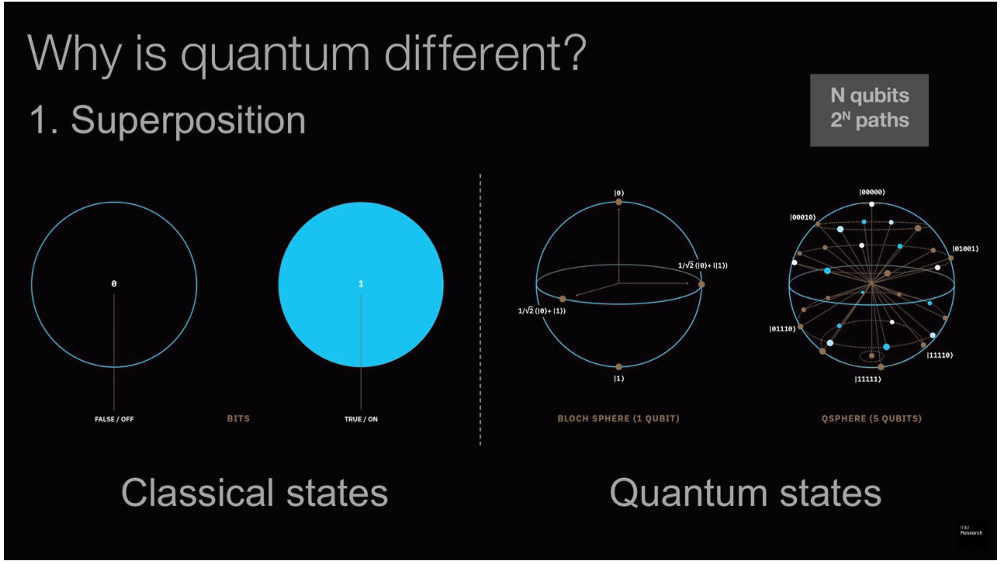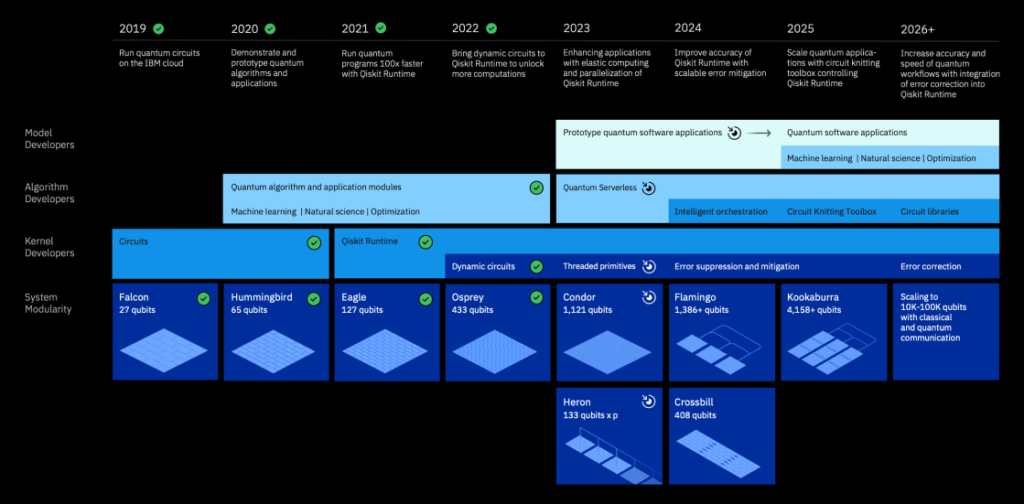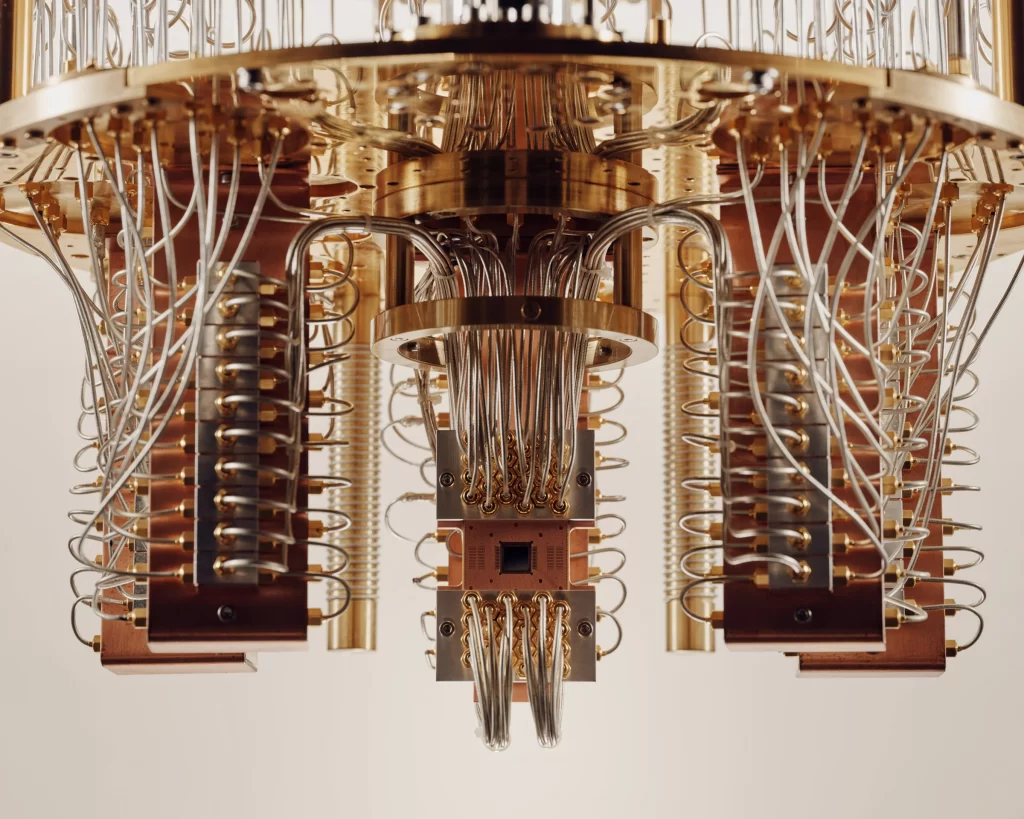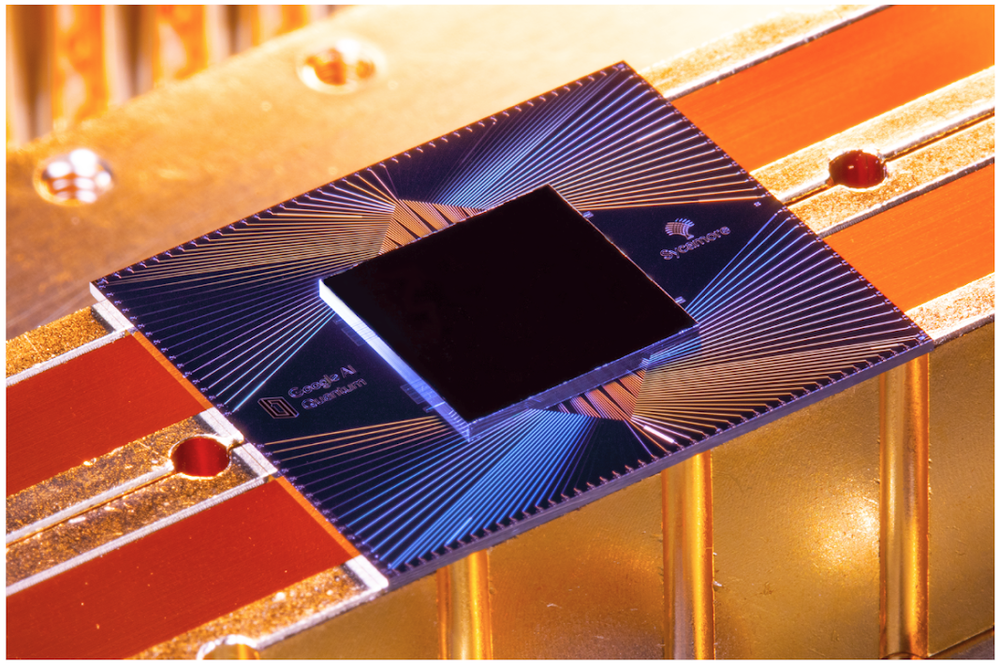Quantum Computing: Where We Are And The Path Ahead
Quantum computing is a relatively new area that uses laws of quantum mechanics to build inner processing components of computers. The main difference between classical and quantum computers is that quantum computers use qubits rather than bits. A qubit could be 1,0 or both at once! (weighted combination of 1 and 0) while bit only could be either 1 or 0. In classical computing, bits are represented in various ways, such as high and low voltages, on and off states of transistors, charged and discharged states of capacitors, and many more. Similarly, qubits can be implemented in different ways. [1] Trapped ions (the first qubits were built using trapped ions in the mid-1990s) and superconducting circuits (used by IBM quantum) are the most used. Neutral atoms, defects in atom lattice (nitrogen impurities in a diamond lattice as an example), photons, and semiconductor molecules also can be used.
But why are quantum computers faster than classical computers? [2] The statement that “quantum computers are faster than classical computers” is only partially accurate. When dealing with complex problems, quantum computers are way faster than classical computers. But there can be instances where classical computers are more efficient. For example, consider where we have to figure out different ways protein molecules can fold. Classical computers try to find them using brute force algorithms. But even a protein molecule consisting of 100 amino acids could theoretically fold into trillion ways such that classical computers cannot practically solve this problem at a reasonable amount of speed. Quantum computers use different algorithms, which create multidimensional solution spaces where patterns linking individual data points emerge. In the case of the protein folding problem, the solution is the pattern that connects data points which takes the least energy. Since quantum computers use this multidimensional approach, they are way faster than classical computers.
Another leading aspect of quantum is encryption breaking. [3] In 1994, mathematician Peter Shor published an algorithm that has the potential to break most of the current cryptographic systems. Even though this algorithm poses a critical threat to many cryptographic systems, there is a drawback. It requires a quantum computer with millions of stable qubits. Current quantum computers only consist of a few hundred stable qubits. So current cryptographic systems are secure for now. Classical computers could not crack these public key encryption schemes like RSA because it requires a lot of time to do the calculations involving large prime numbers. Quantum computers use different algorithms to search number spaces parallelly to find these large prime numbers.
There are several companies involved in quantum computing. Xanadu, a Canadian company recognized for exploring photonic quantum computing, Toshiba’s Quantum Key Distribution program, which is working to secure network communications, and Righetti, which is experimenting with superconducting qubit technology, are some. Also, well-established tech companies such as Intel, Amazon, Google, and Microsoft have separate quantum computing research divisions. Since becoming the first to offer cloud-based quantum computing, IBM has done many developments in quantum computing. Their quantum computing roadmap shows many advancements.
[4] In 2022, IBM updated its development roadmap to present an ambitious plan for scaling quantum systems beyond old limitations. Up to date, they have been able to hit planned milestones on time., and they are planning to do so in the future too. In 2022, they unveiled the 433-qubit Osprey processor, just one year after breaking the 100-qubit barrier with a 127-qubit Eagle chip. And this year, they are on track to deliver the 1,121-qubit Condor processor and control large systems. The key to solving the scalability problem is going beyond single-chip processors to multicore processors. Therefore, they are planning to introduce classical parallelized quantum computing with multiple Heron processors connected to a single control system. After succeeding in this initial step, they are planning to debut Crossbill, the first single processor made from multiple chips, in 2024. They will also unveil their Flamingo processor in the same year. This remarkable processor will be able to incorporate quantum communication links, allowing IBM to demonstrate a quantum system comprising three Flamingo processors totaling 1,386 qubits. They will be combining multi-chip processors and quantum communication technologies to create their Kookaburra processor by 2025. This leap forward will usher in a new era of scaling, providing a clear path to 100,000 qubits and beyond.



References
[1] C. Crockett, “More than one way to make a qubit,” symmetry magazine. https://www.symmetrymagazine.org/article/more-than-one-way-to-make-a-qubit[2] IBM, “What is Quantum Computing? | IBM,” www.ibm.com, 2022. https://www.ibm.com/topics/quantum-computing
[3] R. Morrison, “Have Chinese scientists really cracked RSA encryption with a quantum computer?,” Tech Monitor, Jan. 06, 2023. https://techmonitor.ai/hardware/quantum-encryption-rsa-cryptography
[4] “IBM Quantum Computing | Roadmap,” www.ibm.com, Oct. 01, 2015. https://www.ibm.com/quantum/roadmap
